 Are you considering mobile marketing? Wondering how mobile opt-ins differ from social opt-ins?
Are you considering mobile marketing? Wondering how mobile opt-ins differ from social opt-ins?
Keep reading to discover how mobile opt-in marketing is unique from social media marketing.
In a previous post discussing how to combine QR Codes with Facebook, I received a lot of questions about opt-ins. Given the importance consumers place on spam management across all media, and brands place on tracking digital marketing's effectiveness, understanding social and mobile marketing opt-ins is imperative.
Opt-in Marketing Defined
Traditional opt-in marketing, often called “permission marketing,” requires marketers to get explicit permission from consumers before they can deliver marketing collateral to them. This approach contrasts with “interruption marketing” where consumers receive messaging from a brand without giving consent (which, when done badly, reminds us of a certain meat product).
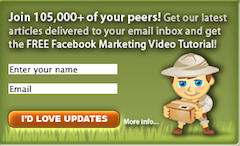
How Social Media Opt-ins Differ From Traditional Opt-ins
On social media platforms like Facebook and Twitter, users give brands permission to submit communication to their digital identity by simply clicking a like, follow or plus button. You'll never see a social media “double opt-in;” i.e., “Are you sure you want to like this page?”

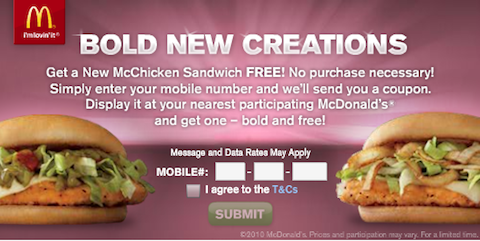
How Mobile Opt-ins Differ From Traditional Opt-ins
Mobile opt-ins operate more similarly to traditional channels like direct mail and email than social media opt-ins. Brands request a point of contact from consumers, which, if given, effectively grants the brand permission to message consumers directly. This point of contact for mobile is, of course, a mobile phone number, which brands can use to send voice, text (SMS) or other mobile messages.
For mobile marketing channels like mobile web and mobile apps, opt-ins possess both social and mobile elements. On the mobile web, brands can direct consumers to a mobile landing page with clickable links, radio buttons and/or write-in fields.
With mobile apps, brands interact with consumers when they download an application by requesting push notifications or location-based information. In addition, apps may use a sign-up process to enable direct communication.
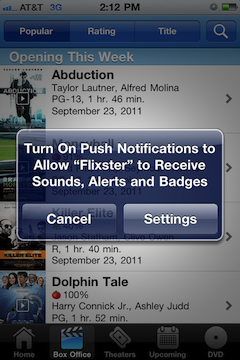
Strategy Behind Opt-Ins
Opt-ins provide brands a huge benefit: privileged access to consumers.
With this access, brands can drive purchases and respond by drawing consumers with alternatives (“Try it our way!”), attacking (“Their way stinks!”) or compelling content (“Our way is better!”).
Incentives are how brands give back. Every opportunity to like, follow or sign up in exchange for discounts, points or rewards demonstrates a key emphasis for an opt-in strategy.
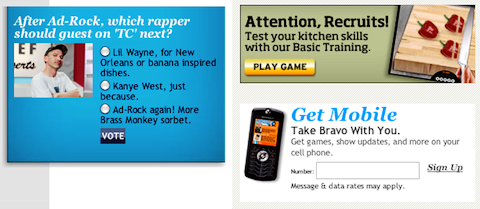
Once brands obtain consumers' points of contact, they then have to provide relevant and interesting information to keep consumers engaged.
Enter the idea of database marketing, where brands target messaging to consumers according to certain characteristics (e.g., gender, age, purchasing history) in order to establish a more intimate brand-consumer connection.
Non-coincidentally, database marketing explains in large part the social and mobile explosion, as immense amounts of self-reported data are available to marketers using these channels.
Get World-Class Marketing Training — All Year Long!
Are you facing doubt, uncertainty, or overwhelm? The Social Media Marketing Society can help.
Each month, you’ll receive training from trusted marketing experts, covering everything from AI to organic social marketing. When you join, you’ll also get immediate access to:
- A library of 100+ marketing trainings
- A community of like-minded marketers
- Monthly online community meetups
- Relevant news and trends updates

Discover Proven Marketing Strategies and Tips
Want to go even deeper with your marketing? Check out the Social Media Marketing Podcast! Publishing weekly since 2012, the Social Media Marketing Podcast helps you navigate the constantly changing marketing jungle, with expert interviews from marketing pros.
But don’t let the name fool you. This show is about a lot more than just social media marketing. With over 600 episodes and millions of downloads each year, this show has been a trusted source for marketers for well over a decade.
Technology Behind Opt-ins and Compliance
Brands need technology to message consumers in order to sell more products. Consumers need technology that delivers communication only from those brands connected to them.
But the actual implementation of technology introduces a slippery slope of complexity. Consumers who don't have sufficient technical acumen may struggle to opt in. Brands respond by automating the opt-in process after purchase. This causes consumers who strictly guard their privacy to complain, as they may not know that one purchase may constitute ongoing access to them.
So brands adjust and only message after two purchases. But then consumers miss out on a promotion after only purchasing once and demand more frequent updates… and so on.
Various social and mobile technology solutions exist to address these issues. One example is the “like-gate” for a Facebook page, which requires that a consumer like a page before viewing its content. In addition, social media privacy policies inform consumers about what goes on behind the scenes after an opt-in.

For mobile, carriers and the Mobile Marketing Association monitor and decide how technology should manage opt-ins. Texting a keyword to a short code (either manually or via QR code) and entering a phone number into a web form both qualify as legitimate opt-ins as long as consumers receive a compliant confirmation message in real time. Premium content (e.g., ringtones and services charged to a wireless bill) requires a double opt-in, where consumers have to reply again to the confirmation message.
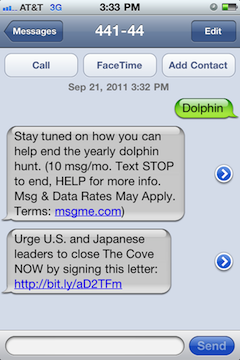
Social vs. Mobile Opt-ins
Given this understanding of social and mobile opt-ins and their strategy and technology, which should marketers select? Let's see if we can find the answer by comparing them.
With social media, consumers opt in by clicking a button online; brands communicate to consumers generally via status updates. Consumers benefit from one-click access to brands if they are signed in online, but miss out if not online or engaged via offline media like radio or signage. Brands benefit from social networking effects, but have to depend on a third party for their subscriber lists and data.
With mobile, consumers opt in by texting, scanning or submitting information to a mobile website or app; brands send direct communication to consumers via mobile messaging. Consumers benefit from immediate information, but may be hesitant to give out their mobile phone number. Brands benefit from a direct connection to consumers, but miss out on the immediate data social networking sites provide.
Hmm. I'd say inconclusive at best, as neither seems like a clear winner. But without selecting between social and mobile, how can you design an opt-in digital marketing strategy?
What It All Means
The answer is straightforward: with digital permission marketing, you can have your cake and eat it too. Just as consumers communicate with each other via social and mobile media, so should brands and consumers. Brands can integrate social and mobile, effectively reaping the benefits of both while sidestepping their drawbacks.
Consider a campaign with a QR code call to action offering a 25% off digital coupon code that sends a consumer to a like-gated Facebook page. Once liked, consumers have to enter their mobile phone number via a sign-up widget in order to receive the digital code. Marketers get both opt-ins and engagement across both channels and consumers spend less money. Now that's powerful, cross-channel marketing.
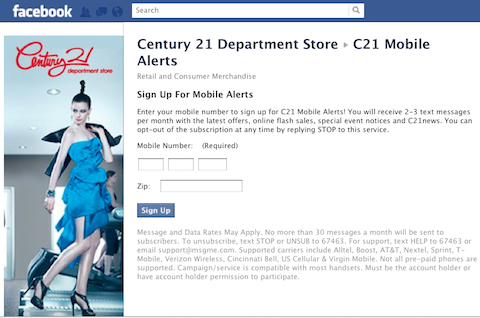
Going forward, brands can maintain relationships with consumers across both channels. General loyalty club announcements should be posted to social media networks (“All video games on sale!”), whereas specific updates (“We have the video game you want in stock”) should be delivered via mobile. Brands don't have to worry about losing track of consumers, and consumers can choose how and what type of communication they want to receive. Everyone wins.
What do you think? Do you have some other ideas about how to create effective brand campaigns that expertly use social and mobile opt-ins? Please share your thoughts in the comments box below.
Attention Agency Owners, Brand Marketers, and Consultants

Introducing the Marketing Agency Show–our newest podcast designed to explore the struggles of agency marketers.
Join show host and agency owner, Brooke Sellas, as she interviews agency marketers and digs deep into their biggest challenges. Explore topics like navigating rough economic times, leveraging AI, service diversification, client acquisition, and much more.
Just pull up your favorite podcast app, search for Marketing Agency Show and start listening. Or click the button below for more information.

